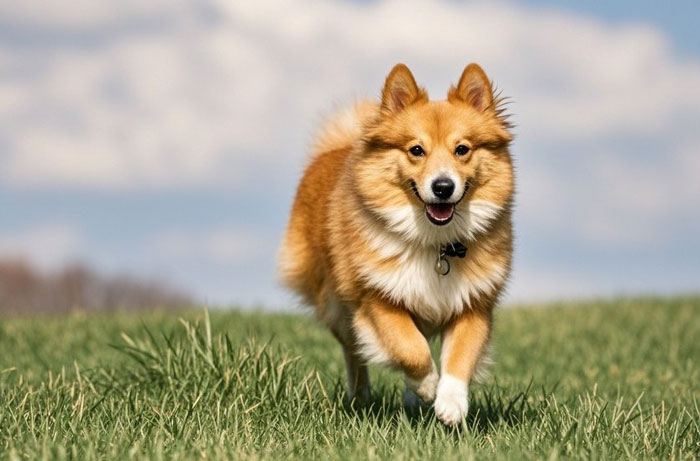Pet Grooming: Tips for Bathing Your Dog

In the pet grooming process, bathing dogs is generally easier than bathing cats. Even if a dog isn’t very cooperative, it won’t try desperately to escape. By learning the pet grooming tips summarized by Aoxiong, you can easily handle the dog bathing step. Below are the preparatory steps before formally bathing your dog during pet grooming.
1. Pet Grooming Prep: Clean Prone-to-Dirt Areas First
A dog’s four paws, rear end, and mouth are particularly prone to dirt. Before applying shampoo to the entire body, wash these areas thoroughly with soap. Soap is preferred over shampoo because it has stronger cleaning power and rinses off more easily. Cleaning these areas again with shampoo during the full bath ensures your dog is thoroughly clean. This prevents color inconsistencies between areas like paws and rear end after washing, a crucial step in achieving a clean finish during pet grooming.
2. Grooming Detail: Trimming Hair Around the Rear End
When cleaning your dog’s rear, first use soap to clean the area around the anus while checking for long hairs prone to trapping feces. Most dogs are cooperative during baths, and wet hair around the rear end is easier to trim. This is the ideal time for trimming. However, exercise extreme caution to avoid cutting the dog’s delicate skin near the anus. This detail enhances the overall neatness of the grooming and reduces the hassle of subsequent hair contamination.
3. Special Pet Grooming Technique: Dry Bathing for Bath-Averse Dogs
For dogs that dislike bathing, dry bathing can assist with grooming. Prepare a bottle with diluted shampoo solution. While the dog’s coat is dry, sprinkle the diluted solution over its fur and work it into a lather. This method requires the dog to come into contact with water only once during rinsing, minimizing resistance. However, this method is unsuitable for large dogs with thick coats, as dry, dense fur absorbs diluted shampoo quickly, requiring large amounts to lather. For such dogs, wetting the coat first remains recommended to ensure grooming efficiency.
4. Pet Grooming Focus: Properly Cleaning Your Dog’s Mouth
For flat-faced breeds like Pekingese or Pugs, special care is needed when cleaning the face during grooming. Avoid direct water sprays on the face. These dogs have short nasal passages and cannot hold their breath, making water entering the nose uncomfortable. Instead, use a damp towel soaked in water to wipe the face. Long-faced dogs may also resist facial washing. Secure their face with one hand to prevent dodging during cleaning. The correct approach is to firmly grasp the dog’s muzzle with one hand to establish control, while using the other hand to direct the spray nozzle along one side of the face. This allows water to flow down between the dog’s eyes and nose, avoiding contact with the eyes and preventing water ingress. Repeat the process on the other side. This technique is crucial for protecting the dog’s face during pet grooming.
5. Pet Grooming Essentials: Prepare Paper Towels or Small Dry Towels
This is an indispensable step in pet grooming. Water easily splashes into a dog’s eyes during bathing. When washing the top of the head, the dog may lower its head, allowing water to flow down its nose. Except when lowering its head and closing its eyes, a dog’s eyes are mostly open. Promptly wiping water from the dog’s eyes and nose with tissue paper or a small dry towel enhances their comfort. For convenience, large tissue paper wipes can be used instead. Their strong absorbency and disposable nature make them more practical than towels, facilitating smoother pet grooming.
6. Pet Grooming Tip: Wear Clothes You Don’t Mind Getting Wet
Dogs love to shake off water when bathing—it’s their natural way to dry off, far more efficient than manual drying. Don’t stop them, especially after washing. Let them shake off as much water as possible, and don’t worry about splashes. This saves significant effort during subsequent drying and blow-drying. Therefore, when bathing your dog during pet grooming, always wear clothes you don’t mind getting wet. A considerable amount of water will inevitably splash onto you as your dog shakes off.
7. Pet Grooming Protection: Ear Plugs for Dogs
During the bathing phase of pet grooming, water entering a dog’s ears can easily cause inflammation. Before bathing, roll two cotton balls slightly larger than the dog’s ear openings and insert them into the ears to block accidental water ingress. However, remember to remove the cotton balls promptly after bathing. If left in place, wet cotton balls may cause ear problems if not shaken out by the dog. This is a crucial protective measure for maintaining your dog’s ear health during grooming.
admin
-
Sale!

Washable Pet Cooling Pad for Cats and Dogs
$10.99Original price was: $10.99.$9.99Current price is: $9.99. This product has multiple variants. The options may be chosen on the product page -
Sale!

Washable Cat Window Hammock Cooling Bed
$23.99Original price was: $23.99.$22.99Current price is: $22.99. -
Sale!

Tropical Amphibian Rainforest Tank, Lizard Cage
$38.99Original price was: $38.99.$36.99Current price is: $36.99. -
Sale!

Silent 4-in-1 Waterproof Charging Dog Hair Trimmer
$49.88Original price was: $49.88.$47.99Current price is: $47.99.